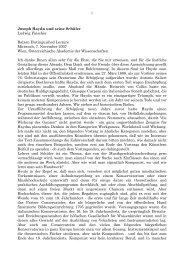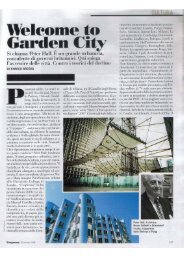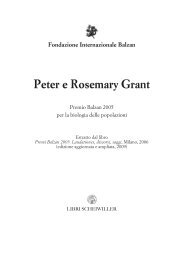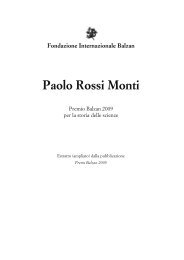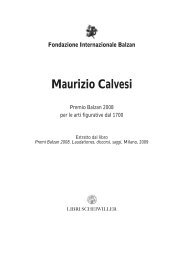International Balzan Foundation Luigi Luca Cavalli
International Balzan Foundation Luigi Luca Cavalli
International Balzan Foundation Luigi Luca Cavalli
Create successful ePaper yourself
Turn your PDF publications into a flip-book with our unique Google optimized e-Paper software.
Genetics and culture<br />
<strong>Luigi</strong> <strong>Luca</strong> <strong>Cavalli</strong>-Sforza<br />
I find it useful to call Culture the heritage of knowledge accumulating over generations,<br />
or, we may also say, culture is what we learn from others and affects our<br />
behavior: it is a much more general definition than the one normally used for the<br />
word “culture” by daily newspapers, which seems to concern only films and<br />
novels. Most animals have culture, though it is clear that humans are the most<br />
cultural animals of all. Culture evolves according to rules which are similar to<br />
those of biology, but the substrate is clearly very different, relying on neuronal<br />
states and relationships, rather than on DNA structure. There are cultural<br />
changes which are equivalent to genetic mutations, such as inventions or innovations,<br />
but they are not as random as biological mutations. On the contrary,<br />
they are often directed toward a specific aim. This is a major difference with biological<br />
evolution. Another great difference is that transmission is not confined<br />
to transmission from parents to children, but can take place, and does more often<br />
take place, between unrelated individuals. This makes cultural change much<br />
faster than biological change. However, there are also cultural traits which are,<br />
in evolutionary terms, much more stable. They are often transmitted from parents<br />
to children (what we call “vertical” transmission), and therefore imitate to<br />
some extent biological transmission, that is known to be very stable. Children<br />
are, to a certain extent malleable, but they also go through critical periods in<br />
which they are especially susceptible to learning specific things, e.g. their own<br />
language must be learned within the first three or four years of life. And the majority<br />
of people have difficulty in learning foreign languages after adolescence.<br />
Most cultural transmission is, however, “horizontal”, i.e. not necessarily influenced<br />
by kinship or age difference between transmitter and transmittee. This<br />
makes the acquisition of cultural novelties potentially very fast, and thus fast<br />
cultural evolution favors assimilation.<br />
What is learnt is not always necessarily favorable to survival or reproduction.<br />
Nevertheless, one can consider culture as an adaptive mechanism that developed<br />
out of the combined use of communication, observation of others, and<br />
learning skills. It obviously relies on the presence of neural structures which<br />
make this possible. Cultural change is not necessarily good or bad, though it<br />
contributes in a significant way to determining our behavior, and, therefore, is<br />
subject to natural selection. One can expect that this will continue to keep cultural<br />
change adaptive, on average, even though maladaptive cultural aberrations<br />
like crime, drugs and the like are to some extent inevitable.<br />
15





